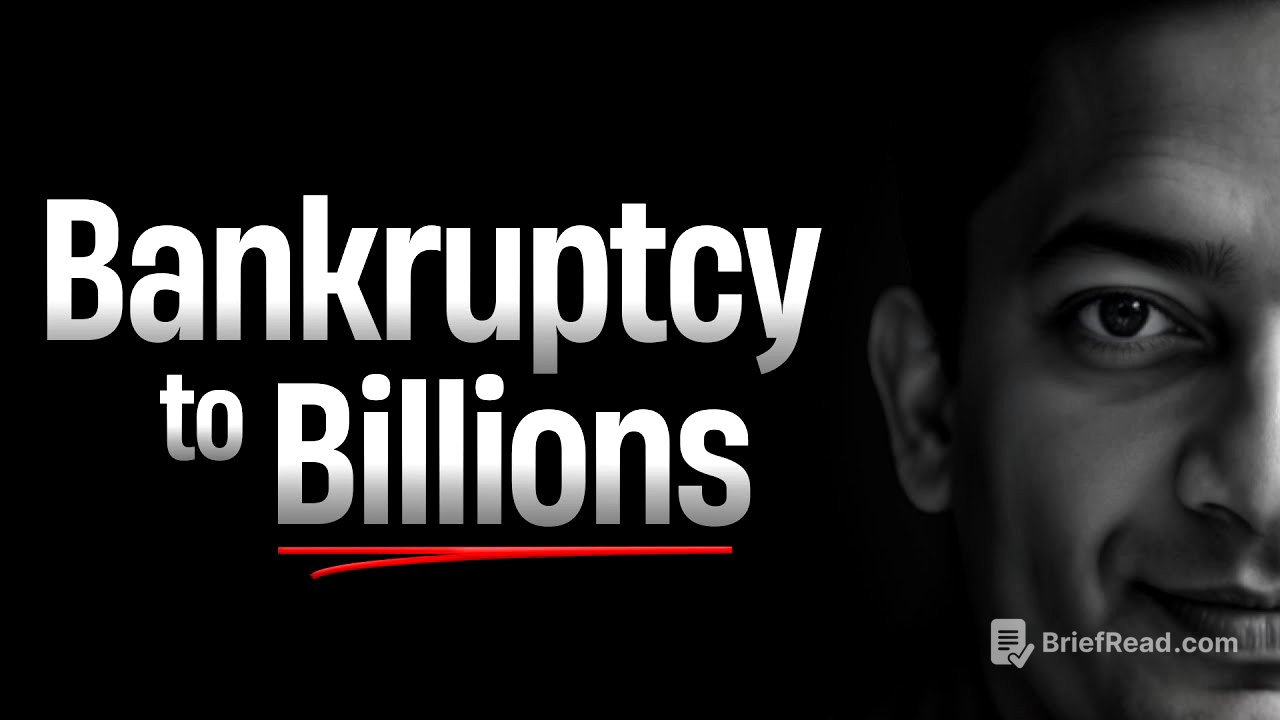TLDR;
This video explores how startups can turn limiting constraints into competitive advantages, using Southwest Airlines as a prime example. It introduces the concept of a "propelling question" to drive innovative solutions by forcing a focus on achieving goals without acquiring more of a limiting resource. The video encourages early-stage founders to prioritize traction over building a perfect product and offers resources for systematic constraint-breaking.
- Constraints can be leveraged into competitive advantages.
- A "propelling question" can drive innovative solutions.
- Prioritize traction over building a perfect product.
Introduction [0:00]
The author, Ash Maurya, discusses how early-stage founders often wish for more time, money, and people to build more features and acquire more customers. He shares a story about a company that transformed its limiting constraints into a competitive advantage, leading them from the brink of bankruptcy to industry leadership. This story changed his perspective on constraints and his own startup's trajectory.
Southwest Airlines' Constraint [1:00]
In 1971, Southwest Airlines faced a severe financial constraint with only $143 left in their bank account after a legal battle. Instead of downsizing or seeking emergency funding, they decided to sell one of their four planes to extend their runway. They asked themselves how they could maintain their existing routes with three planes instead of four without raising additional funds.
The Propelling Question [2:21]
The question "How do we keep our existing routes with three planes instead of four planes without raising money to buy another plane?" is a propelling question that combines a bold ambition with a limiting constraint, forcing breakthrough thinking. Bill Franklin, vice president of terminal operations, analyzed the situation and realized that planes were sitting idle at gates for an hour between flights, costing them valuable time and money.
Gate Turnaround Time [2:48]
Gate turnaround time was identified as the bottleneck resource. By reducing the gate turnaround time from 60 minutes to 10 minutes, Southwest could fly all their current routes with one less airplane. They timed and measured every task, identifying passenger boarding as one of the most time-consuming tasks due to assigned seating.
Eliminating Assigned Seating [3:32]
Southwest eliminated assigned seating, allowing passengers to sit wherever they wanted. This reduced their gate turnaround time to 10 minutes, enabling them to maintain all their routes with one less airplane.
Leveraging Constraints for Competitive Advantage [3:55]
Southwest realized that leveraging constraints created competitive advantages and leaned into them further. They decided to fly a single type of aircraft, Boeing 737s, to reduce maintenance complexity, pilot training, and parts inventory. They offered only economy seats, peanuts, and snacks, and flew only short point-to-point routes.
Constraint-Driven Innovations [5:05]
Each additional constraint made Southwest even more efficient. A single type of aircraft reduced maintenance complexity, no meals meant faster turnarounds, and point-to-point routes eliminated connection delays and baggage transfers. Southwest turned these constraints into a differentiated positioning statement, celebrating them as features.
Applying Propelling Questions to Startups [5:45]
To leverage startup constraints, the author suggests asking a propelling question: "How do I achieve my goal without acquiring more of a specific limiting resource?" This forces innovation through constraints. The author shares his own experience of wishing for more time, money, and people to build more features and get more customers.
Refining the Propelling Question [6:41]
The author realized that building a working product didn't always correlate with a working business model. He refined his propelling question to "How do I build a working business model without more time, money, or people?" He realized that the cause of failures wasn't a lack of resources but building products that not enough people wanted.
Traction First Approach [7:31]
The author aligned his goal with traction or engagement of the idea with its market, leading to the question: "How do I get traction without more time, money, or people?" This led to a traction-first approach, testing an idea with customers and getting them to buy the product before building it.
Conclusion [8:13]
The biggest bottleneck to optimize wasn't building a working product but figuring out the right product to build. The author encourages early-stage startup founders to start with the propelling question: "How do I get traction without more time, people, or money?" He offers a free startup toolkit at leanfoundry.com/juststart and suggests watching another video on validating a product before building it.
